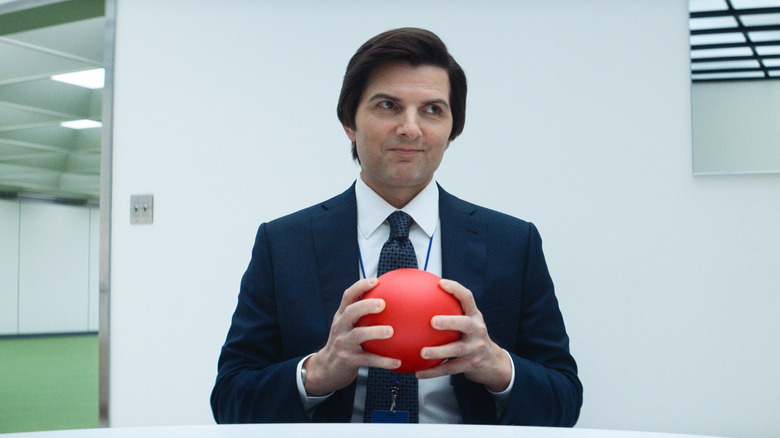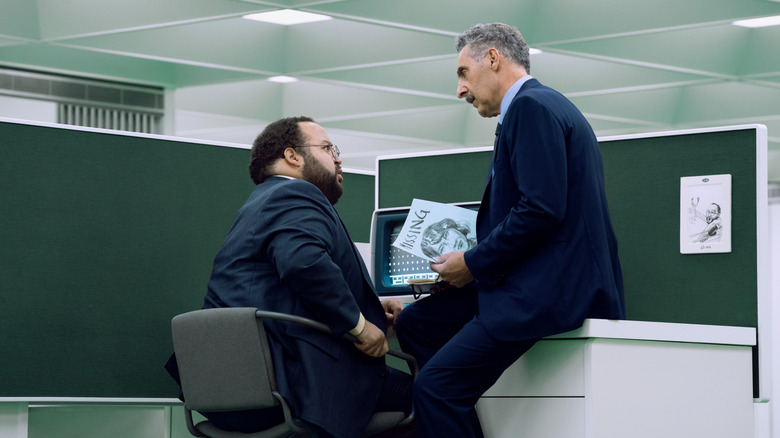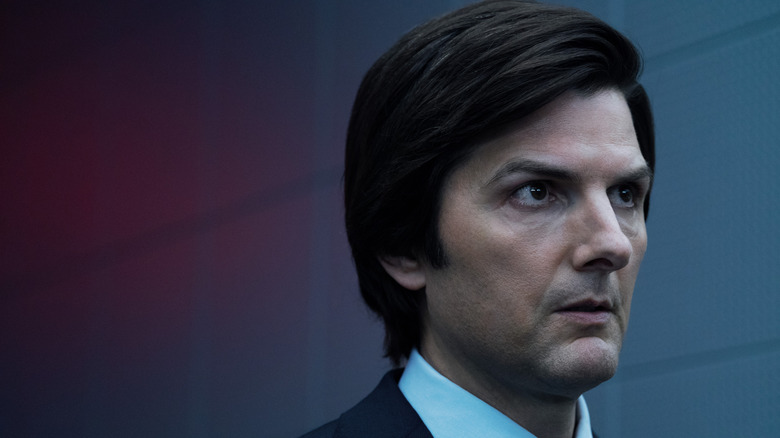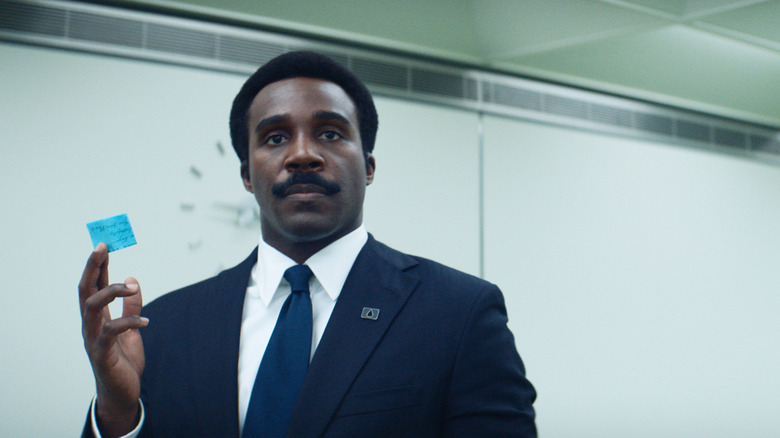
“Severance” season 2 spoilers follow.
The mysteries of Lumon Industries continue in “Severance” season 2, and episode 1 has some interesting clues as to the true scale of the shadowy company. The season premiere takes place entirely inside the office. That means we’ll still have to wait to get some answers on what’s going on outside of Lumon, but new questions are already emerging.
The company has undergone some changes in the five-plus months since the end of season 1, with plenty of lip service being paid to the quality of life for innies. When Mark (Adam Scott) returns to the office, his former team at Macrodata Refinement (MDR) has been replaced by three new faces, all brought in from other Lumon branches. This gives a sense of the company’s reach, as well as the disparity between branches. The employees compare notes about their old branches’ respective Perpetuity Wings, bringing to light how much better-funded certain Lumon areas are. One of the employees, Dario R. (Stefano Carannante), also seems to have been stationed in Italy before, given his first language.
Later in the episode, after the original MDR crew returns, Mr. Milchik (Tramell Tillman) brings them to a newly refurbished break room. He shows them an animated video that details the events of season 1 and the subsequent reforms. In one part of the video, it’s stated that Lumon operates in 206 countries, making it much larger than viewers may have previously thought.
Lumon operates in over 200 countries
If Lumon operates in 206 countries, that raises other questions. At this time, the United Nations only recognizes 195 countries. However, that number grows a bit on other lists, based on which areas are recognized as sovereign states. For example, the Olympics recognize exactly 206 different committees from around the world, which includes countries not recognized by the U.N. like Kosovo and Taiwan.
In other words, Lumon is either recognizing this larger view of independent states and operating in every possible country on Earth, or the near-future world of “Severance” has seen some political upheaval and redrawing of borderlines. Either way, there’s a lot to get curious about. In the same instructional video, it’s reiterated that Lumon was founded in 1870. That leaves a century and a half for global expansion, but we still don’t know what Lumon actually does. It’s said in the show that it’s a biotech company, which is partially obvious from the severance procedure itself and the hints at unnaturally long life seen in the Eagan family.
The exact phrasing regarding the 206 countries is “from which Lumon operates.” That doesn’t necessarily mean that there are branches in every country, but it certainly sounds like it. The building where the show takes place is referred to as Branch 501. However, that doesn’t necessarily make sense. What kind of business would require physical locations in hundreds of countries just for people to sit in an office in front of a computer? The office we see in the show is hardly packed full of employees, so it also doesn’t seem to be a labor force issue.
Lumon’s size helps explain how powerful it is
One thing that does make more sense after learning how big Lumon is internationally is why protests against the severance procedure have been largely unsuccessful. In season 1, we see that there’s a widespread movement trying to ban severance legally. While a domestic company can certainly have the power to stall legislative action through extended lobbying, Lumon’s status as a global force in biotech would give it infinitely more influence over not just the U.S. government, but governments around the world.
Until we know more about what Lumon actually does, it’s hard to guess what exact value it could be contributing to the wealthy and powerful of the world. But given that the company is effectively creating slave labor forces in every country on Earth, there’s ample room to imagine why the folks in charge of things might want to let Lumon continue with its work.
The bigger question is how much of the company’s cult-like religious lore surrounding its founder, Kier Eagan, is shown to the outside world. While international corporations can accumulate immense power and influence under global capitalism, the whole culture around Lumon is definitively strange, in a way that you’d think would make more people cautious. We’ll have to wait for more before all the pieces (hopefully) start to fit together. That’s just how shows like “Severance” work.
Lumon may be shrinking, not growing
One other clue that bears mentioning about Lumon’s size is that Mark W. says he was moved over to the Kier branch after his own was shut down. This could have simply been a matter of poor productivity — he does mention to Mark S. that his MDR team never once made quota — but it could also be a hint that the company isn’t doing so well after its recent bout of bad press.
While legislation banning the severance procedure clearly hasn’t materialized, Mr. Milchick makes it clear that the MDR crew’s season 1 escape stirred up a ton of news. That might have been enough to prompt some closures and consolidations, especially when you consider that the different companies Lumon operates in would all have different regulations.
If Lumon is hurting, there could be a lot more pressure on characters like Milchik to lock things down. Hopefully, more secrets about what Lumon is really up to will be revealed soon.





Leave a Reply